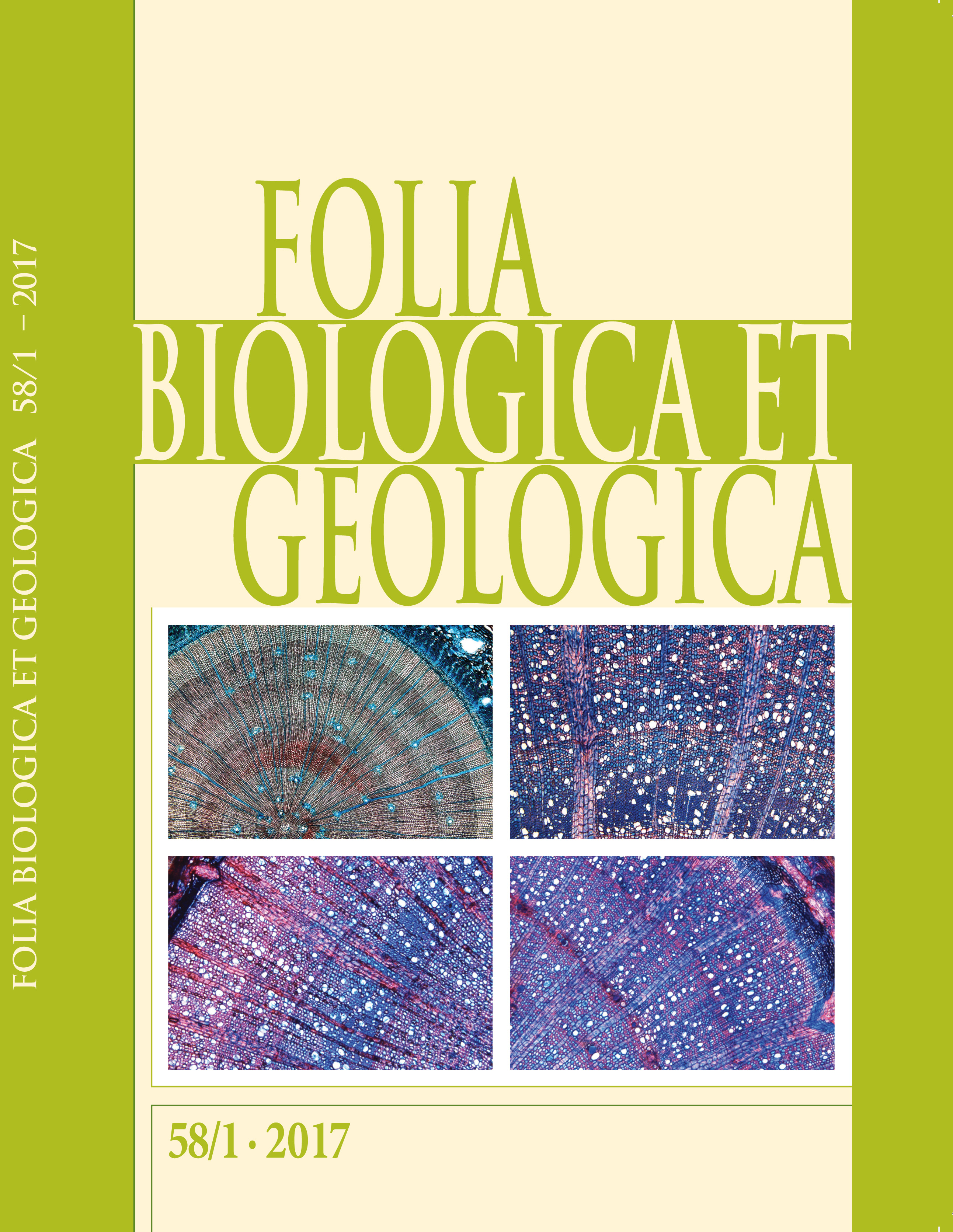Silver fir (Abies alba Mill.) ectomycorrhiza across its areal – a review approach / Ektomikorizni simbionti bele jelke (Abies alba Mill.) na naravnem območju razširjenosti – pregled
DOI:
https://doi.org/10.3986/fbg0025Abstract
Silver fir is a long-living ecologically valuable and indigenous conifer species. In temperate forests it is considered as a ˝stabilization tree species˝. Currently, knowledge of silver fir ectomycorrhiza community is manly based on morphological-anatomical description of ectomycorrhizal fungi and their fruiting bodies. Only recently few studies were published in which authors identified ectomycorrhizal symbionts of silver fir with an aid of molecular (DNA-based) markers. We analysed the silver fir ectomycorrhiza diversity and species richness from different geographic areas and stand types. From all together nine original studies we calculated average species richness as well as a Bray-Curtis similarity index. The highest species diversity was observed in studies where a combination of morphological-anatomical and molecular approaches were used for identification. Bray-Curtis similarity index indicated highest dissimilarity of the southern sites comparing to other areas. We correlated the observed outcome to differences in soil conditions, climate, and only basic identification approach.
Keywords: Silver fir, ectomycorrhiza, literature review, community composition, site conditions, species diversity, species richness
Bela jelka je vednozelena drevesna vrsta, ki ima v naravnih gozdovih ekološko pomembno vlogo, saj velja za stabilizacijsko drevesno vrsto. Podatki o ektomikoriznih simbiontih bele jelke pretežno temeljijo na morfološko-anatomskih opisih ektomikoriznih gliv in njihovih trosnjakov. Šele v zadnjih letih je bilo objavljenih nekaj študij, v katerih so avtorji združbo ektomikoriznih gliv bele jelke analizirali z molekularnimi pristopi. V preglednem članku smo analizirali rezultate pestrosti ektomikorize bele jelke z devet lokacij in preračunali povprečne vrednostmi vrstne pestrosti ter Bray-Curtisov indeks podobnosti združb. Največjo vrstno pestrost smo ugotovili za vzhodni del areala bele jelke. Poleg ugodnih rastiščnih razmer k temu predvidoma doprinesejo tudi kombinacija uporabljenih metod za identifikacijo. Bray-Curtisov indeks podobnosti združb kaže, da med zastopanimi regijami znotraj areala (centralna, vzhodna in južna) po vrstni sestavi najbolj odstopajo rastišča v južnem arealu bele jelke. Odstopanja vrstne sestave lahko povežemo z razlikami v pH tal, s tipom tal in s toplejšo, za belo jelko manj primerno klimo.
Ključne besede: bela jelka, ekomikoriza, pregledni članek, združba ektomikorize na jelki, rastišči pogoji, bogastvo vrst, vrstna pestrost
Downloads
Published
Issue
Section
License
Authors who publish with this journal agree to the following terms:- Authors retain copyright and grant the journal right of first publication with the work simultaneously licensed under a Creative Commons Attribution License that allows others to share the work with an acknowledgement of the work's authorship and initial publication in this journal.
- Authors are able to enter into separate, additional contractual arrangements for the non-exclusive distribution of the journal's published version of the work (e.g., post it to an institutional repository or publish it in a book), with an acknowledgement of its initial publication in this journal.
- Authors are permitted and encouraged to post their work online (e.g., in institutional repositories or on their website) prior to and during the submission process, as it can lead to productive exchanges, as well as earlier and greater citation of published work (See The Effect of Open Access).




